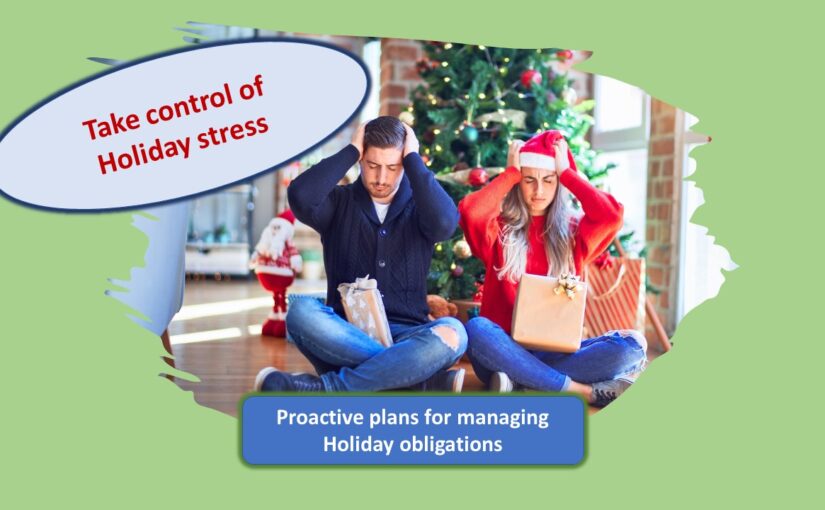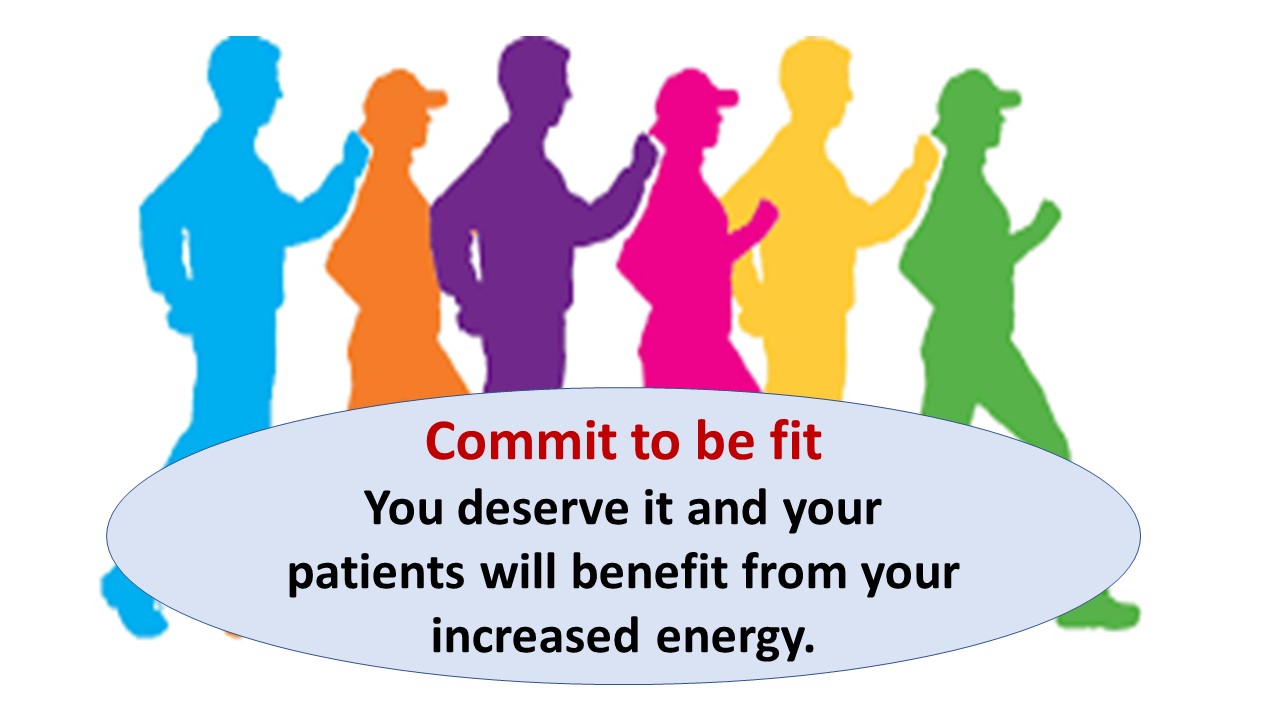By Thomas Davis, DNAP, MAE, CRNA
“It’s the most wonderful time of the
year
With the kids jingle belling
And everyone telling you be of good cheer
It’s the most wonderful time of the year”
~Song by Andy Williams
The earth is completing another trip around the sun and the holiday season is rapidly approaching. It is a time of the year when we are forced out of our daily routine and thrust into glitz and glamor of the holidays. Regardless of your culture or religious background, business as usual is cast aside and festivities abound in our homes, workplaces, and communities. In many ways, it’s the most wonderful time of the year, however, along with excitement comes expectations, obligations, and stress.
It’s the most stressful time of the year
Intrinsic to the holiday season are both internal and external sources of stress, however, taking time to plan and prepare will enable you to bypass many of the frazzled moments that commonly accompany festivities. Like it or not, we are creatures of habit and being forced out of a routine is known to cause anxiety and frustration. Holiday obligations disrupt the status quo and take time away from normal activities. Gatherings with the family or workgroup require proper attire, hair, makeup, childcare, not to mention the hostess gift and the dessert tray. In addition, children have holiday events at school that conflict with a busy work schedule and cause guilt if you ask for time off or guilt if you don’t.
My podcast interview with Cathy Horvath, DNP, CRNA and Chair of the AANA Wellness committee exposed the extent to which healthcare workers are feeling stressed. Her statistics reveal that 77% of our colleagues report frustration and exhaustion related to their work and 45-55% report feelings of stress and anxiety on a frequent basis. Even more telling, 50% of healthcare workers report feelings of depression with 13% stating that they have had suicidal feelings. The numbers are alarming, and the stress only increases during the holiday season.
Thinking that the workplace will provide a haven from the chaos at home may lead to disappointment when work does not provide the escape that is desired. Typically, patients have reached maximum co-pay by the end of the year and are in a rush to get procedures done before the ball drops in Times Square. The case load is high, the vacation calendar is full, and your work hours are longer just as you have a million other things to do. Yes, it’s a stressful time of the year.
The Mayo Clinic healthy lifestyle blog identifies the holiday season as a potential source of significant stress and advises that we become attuned to our feelings and acknowledge them. In addition, they recommend that we remain realistic by not abandoning healthy habits and by saying “no” to set boundaries. The Johns Hopkins wellness blog advises that we keep sight of what really counts and always respond with kindness, even when stressed. Building on the theme of reducing stress, author Kaleigh Carter notes the importance of physical activity, meditation, and sleep during the busy holiday season. Regardless of the source that you reference, all agree that the holiday season is stressful and that a combination of anticipation, planning, and preparation will make the stress manageable…and may even re-infuse fun into your life.
Practical tips for managing holiday stress
Ramp up your self-care. A healthy body is the first line of defense against stress and your body’s basic requirements don’t change with the season. Put differently, the body does not need more calories and less sleep during the holiday season. Taking charge of the body’s basic needs requires focus, discipline, and commitment. Self-control is empowering.
- Nutrition. The body’s basic need for high quality fuel does not change just because holiday parties are on the calendar. Essential nutrients are still required, and harmful foods are still harmful. Unless you become a mega-cardio gym rat, your calorie requirements remain the same during the holidays and extra food volume will give you extra work to do when “lose weight” appears on your New Year’s resolution list. Go heavy on fruits and vegetables while limiting foods that are high in fat and salt.
- Exercise. Keep moving and don’t let distractions pull you away from your exercise time. Participate in outdoor activities when the weather permits and move indoors when the snow flies. A gym membership offers the opportunity for a social aspect to your workout. Buy a mat and use online programs at home to assist with stretching, yoga, and meditation.
- Sleep. When things get hectic, it’s easy to sacrifice a few hours of sleep, however over time the lack of sleep will take its toll. Get into a bedtime routine and allow your body to relax by quietly reading or meditating before retiring for the day. Keep a regular schedule that ensures the proper amount of sleep.
- Seek the sun. Seasonal affective disorder is described in the DSM5 as depression related to a lack of exposure to the sun. Military personnel returning from duty in Alaska will affirm the negative effects caused by the long periods of darkness during the winter months. Similarly, OR personnel drive to and from work in the dark during the holiday season with little opportunity for sun exposure. Be creative, walk to a different area of the building, find a sunny spot for your lunch, and you’ll get the added benefit of exercise.
- Take a break. Rather than slurping coffee on the run, plan a mid-day break into your schedule. Get out of the lunchroom and leave the gossip to others. Plan a 5-minute walking route that includes going up and down one flight of stairs and passes through a sunny location along the way. Be creative and find a quiet location to put a mat on the floor and do some stretches at work. Both your mind and body will thank you.
Anticipate and prepare for external stressors
It’s always easiest to pick the low hanging fruit and taking care of oneself physically is easier than dealing with all the external expectations/obligations of the holiday season, however, by setting goals and limits you can develop a plan to minimize stress. Here are some holiday stresses that may emerge from the festivities and knock you off track.
Social gatherings with the workgroup and/or your family. Receiving an invitation to the annual office party or family holiday gathering gives you a sense of inclusion and the expectation of a joyful evening. The invitation also creates an obligation to add another item to your already packed schedule. Time, effort, and money are required to get the right attire, arrange childcare and put together a hostess gift. Once at the party, high calorie food is abundant and alcohol flows freely, both are challenges to your commitment for self-care. Here are a few tips.
- Eat a small amount of healthy food before going to the party so that you are not ravenous when you arrive. At the party, commit to sampling a few items rather than filling your plate several times with high calorie, high salt, food. “All you can eat” does not mean eat all you can.
- Drink alcohol slowly and commit to alternating each alcohol drink with a non-alcohol drink.
- Make it about the people, not the food/alcohol. You work with these people daily, but do you really know them? Challenge yourself to learn something new about each person at the party. As you talk to colleagues, remind yourself of something that they do particularly well or something about them that you are grateful for.
Financial obligations. We criticize congress when they pass a budget and then spend millions of additional dollars for “off budget” items. Often, during the holiday season we imitate our government, throw caution to the wind, and throw “off budget” money at gifts and parties. Establish a reasonable budget for the holidays and stick to it. Find low-cost activities such as a family hike through the woods to replace the high dollar trip to the theater complete with twenty-dollar popcorn. Make a hostess gift such as an ornament rather than buying an expensive bottle of wine. When you finish buying gifts for the family, be finished. That one extra gift or stocking stuffer for each member of the family can add another $100 to the cost of the holidays. The bottom line is that unlike the Federal Government, you must pay your bills so pull the reigns and spend wisely.
Create good cheer and positive vibes for the Holiday season
The holiday season is a time for gift giving and the best gift that you can give yourself is an organized, low stress month filled with pleasant memories. Your internal dialogue sets the tone, and an optimistic and proactive attitude are building blocks for success. Start and end each day by practicing gratitude and think of three things that you are grateful for. The activity will reduce your negativity bias and help to remove the feeling of being victimized by the holidays.
The bottom line is that in addition to being the most wonderful time of the year, the holiday season can also be the most stressful time of the year. Be mindful of the tips put forth by Cathy Horvath in the podcast and use a combination of self-help activities, planning, and an optimistic mindset to set reasonable boundaries and ensure a memorable Holiday season.
Click here for the podcast with Cathy Horvath, DNP, CRNA
Tom is an experienced leader, educator, author, and requested speaker. Click here for a video introduction to Tom’s talk topics.


